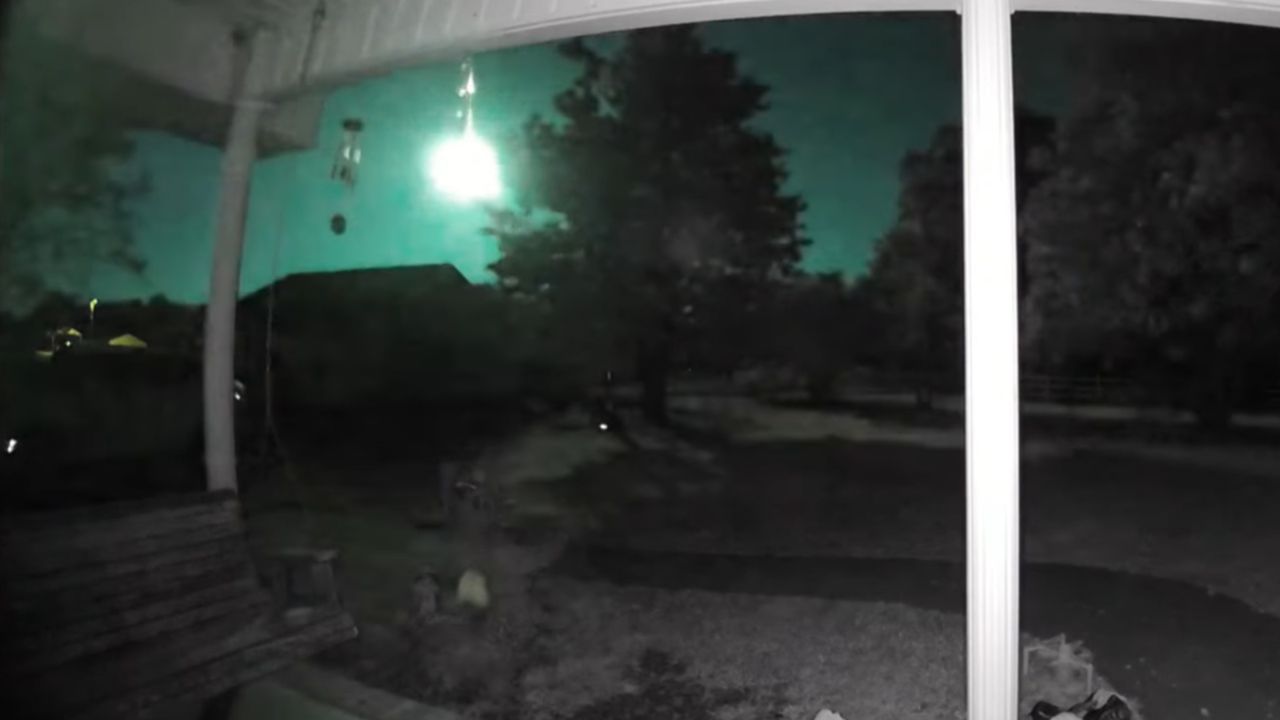
A fireball meteor flared to life above the southern U.S. on Oct. 14, briefly turning night to day as it blazed through the sky before fragmenting as it neared the horizon.
The brilliant green fireball lit up the skies over several states including Kentucky, Tennessee and Alabama at 3:11 a.m. EDT (0711 GMT) on Oct. 14, casting long shadows as it streaked earthwards before visibly breaking apart as it was overwhelmed by the friction of atmospheric entry. Its fiery passage was documented in videos captured by smart doorbells, security cameras and dashcams, which were subsequently uploaded to the American Meteor Society (AMS) website.
"This fireball was most likely a member of the South Taurid meteor shower which is active during October and November," Robert Lunsford, Journal Editor at the AMS told Space.com in an email. "Fireballs are common from this shower, but they usually occur during the last week of October and the first week of November."
Earth is currently passing through two distinct debris streams shed by the solar system Comet 2P/Encke that give rise to the Northern and Southern Taurid meteor showers, which are known for producing a slight uptick in spectacular fireball events around this time of year.
"Fragments from Comet Encke and all comets in general are very fragile and will disintegrate while still high in the atmosphere," continued Lunsford. "So, there is no chance of any meteorites making it to the ground from this fireball if it was indeed a Taurid fireball."
The Southern Taurid and Northern Taurid meteor showers are due to peak on the nights of Nov. 4-5 and Nov. 11-12, respectively, during which up to five meteors might be visible streaking across the sky each hour, under ideal dark sky conditions. Unfortunately, the Southern Taurid stream will crescendo under the light of a full moon, which will obscure fainter shooting stars.
Astrophotographers interested in capturing a Taurid meteor should read our guide on how to photograph meteors and meteor showers, along with our roundups of the best cameras and lenses for imaging the night sky.
Editor's Note: If you capture an image of a fireball and want to share it with Space.com's readers, then please send your photo(s), comments, and your name and location to spacephotos@space.com.








